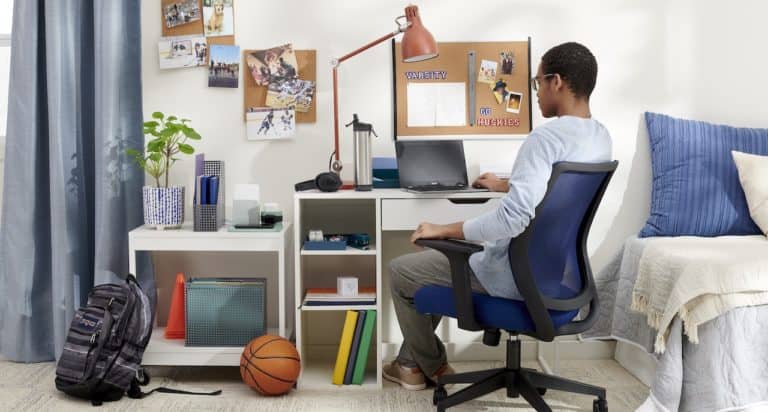This new “normal” isn’t anything we’re accustomed to. With school closures, social distancing, working from home, job lay-offs and 24/7 family time, everybody is making huge adjustments to the massive disruption wrought by this crisis. While we adults struggle to wrap our brains around these changes, it’s even harder for children and teens who may not understand why they are home. They’re now separated from friends, family, school, and extracurriculars. They feel ripped off and lack a sense of control about their lives. And then there’s the worry. We’re concerned for our loved ones while simultaneously feeling helpless to protect them and ourselves.
Right now our anxiety levels are high
Many of us have more anxiety than usual.
Anxiety comes from wanting safety and security and being unsure if they can be found. We don’t want to dismiss our children’s anxiety but rather we want to respond to it in healthy ways. Attempting to resolve each worry is like playing a game of Whack-a-mole: once one worry is gone, another will pop up in its place. Instead, this is the time to take a step back and examine how your teen’s anxiety operates by focusing on the way it works—the process and not the content.
Dealing successfully with anxiety relies on the three “R’s” reflect, recognize and reset. Instead of minimizing your kids’ feelings or trying to get rid of them by saying things like “Don’t worry, we’ll be fine,” you’ve got to acknowledge how they are feeling and offer them tools to tolerate the discomfort of their emotions.
Offer these words instead: “Of course you’re disappointed and angry that graduation may be cancelled. It’s terribly sad.” Or, “Of course you’re missing your friends and hanging out. It’s lonely not seeing them in person.” Listening compassionately and reflect back what you hear.
Since you can’t make this situation go away, acknowledge its reality and how your teen is affected by it. Then together figure out what is the next right thing to do. This is a collaborative process based on brainstorming. You help them reset in a moment when they’re lost or overwhelmed or frustrated.
There’s another crucial piece to dealing successfully with anxiety: building resiliency. Anxiety is very skilled at causing amnesia of past successes—times when your child or teen faced and overcame an obstacle or fear. Kids need reminders of their previous achievements. Together, recall the times they tackled and survived tough times and write them down. Consider doing this for yourself as well.
Five ways to reduce anxiety
When we are worried, our tension and stress induces anxiety in our kids. Follow these steps to reduce your family’s stress and anxiety:
- Name the anxiety: It’s easier to band together to fight the worry monsters that are invading our homes if we identify them. “Oh, there’s Donald Downer, making everyone feel scared again” or “Here’s Fantasy Fred, imagining the worst.” Consider making a family drawing or writing a funny song about the effect of anxiety in your lives. Enlist your kid’s assistance. They’re likely to have some creative ideas and insights, regardless of their protesting.
- Be honest without over-sharing: It’s okay to share a sanitized version of some of your concerns without going into the details. There’s a big difference between “Yes, I think about Grandma and Grandpa too and wish we could visit them” and “I’m so worried about my parents and how they are managing. I don’t want them to get sick and die.” Be careful about how you discuss your anxiety within your child’s earshot. Try to avoid talking about how much you want an extra glass of wine to soothe your nerves. While that may well be true, you’re also conveying to your kids that self-medicating is a coping tool. That’s not the message we want them to learn.
- Offer daily kindnesses: Make a family agreement to do something nice for one person each day. Brainstorm some suggestions together, write them down, and share them with each other at dinner or before bed.
- Catch them doing something positive: People are getting on each other’s nerves with each day of confinement. Get some Post-It’s or a large sheet of paper and tape it to a wall. Whenever you catch your kids doing something positive—their schoolwork, chores, playing a game, etc.—write it down. At the end of the week, call a short family meeting and read what’s on it. This turns the attention away from what’s not working to what is.
- Use bedtime to check in: Once they’re under the covers, sit or lie down with them for a few moments. Ask them about a highlight of their day. Whether it’s small: “I liked the pancakes this morning” or something bigger: “My teacher liked my essay,” celebrating whatever happiness occurred in the day will shift the negative focus and decrease anxiety. These moments counter the fears, disappointments and frustrations by offering a fresh perspective on the day.
While you can’t make uncertainty go away, you can reduce its influence on your family. Use a daily schedule to bring structure to your days so kids know generally what to expect during their waking hours. Take a daily walk outside, tune into your environment and identify new flowers or leaves emerging. This is the time to help your kids learn how to manage their upsets by listening to their concerns, validating what you hear and figuring out together how to move forward.
More to Read:









